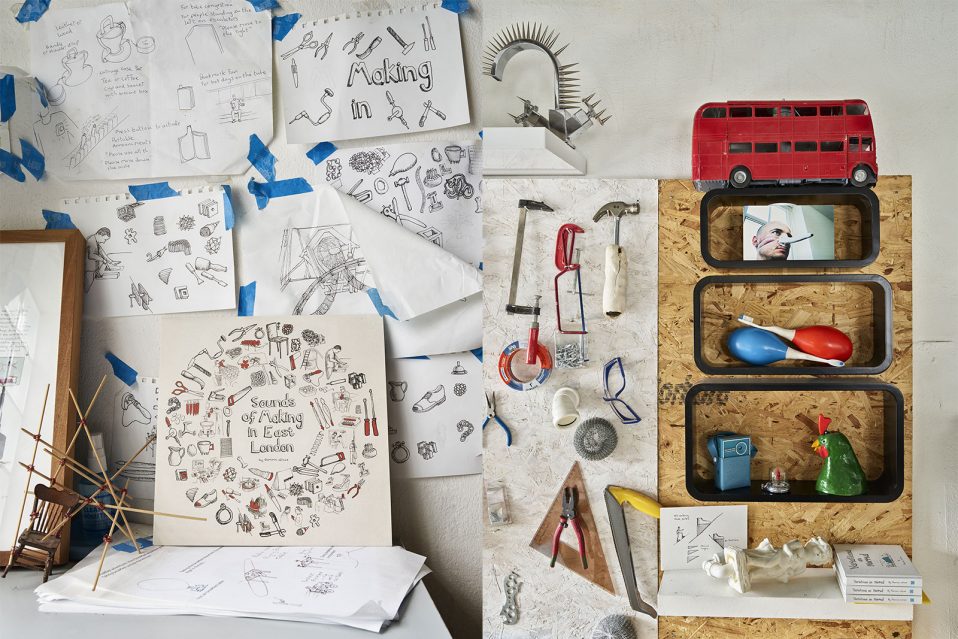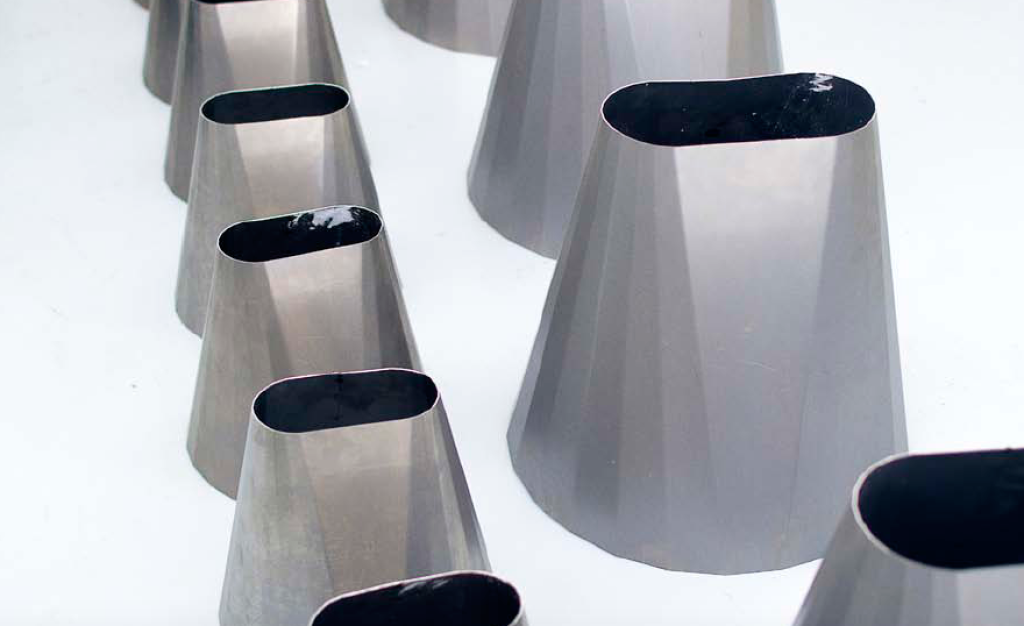
Last November, I had the pleasure to visit and interview Dominic Wilcox in his London studio for the Italian magazine ICON design, and talk to him about his past and recent work, concluding with some thoughts on his incredible initiative Little Inventors. The result was published in the April issue of the magazine, just in time for Salone, and is also available online (in Italian only). An excerpt below of my English original.
Dominic Wilcox doesn’t stop. As I speak to him, the designer-inventor fidgets, his eyes wander, his mind rushes. It is a grey London morning in mid-November, and his studio and workshop is teeming with his many inventions: drawings and sketches adorn the walls, showing his creations in their inception, while prototypes and one-offs are displayed in walls or tucked under desks. His suitcase is at the door; he just returned from a trip in Vienna, Amsterdam, Warsaw, and Wisconsin, sharing his expertise in innovation, invention, and the ability to surprise and delight. And yet, his first, ingenious creations have now lead to an ambitious, game-changing initiative, with the potential to create long lasting change at a global level.
